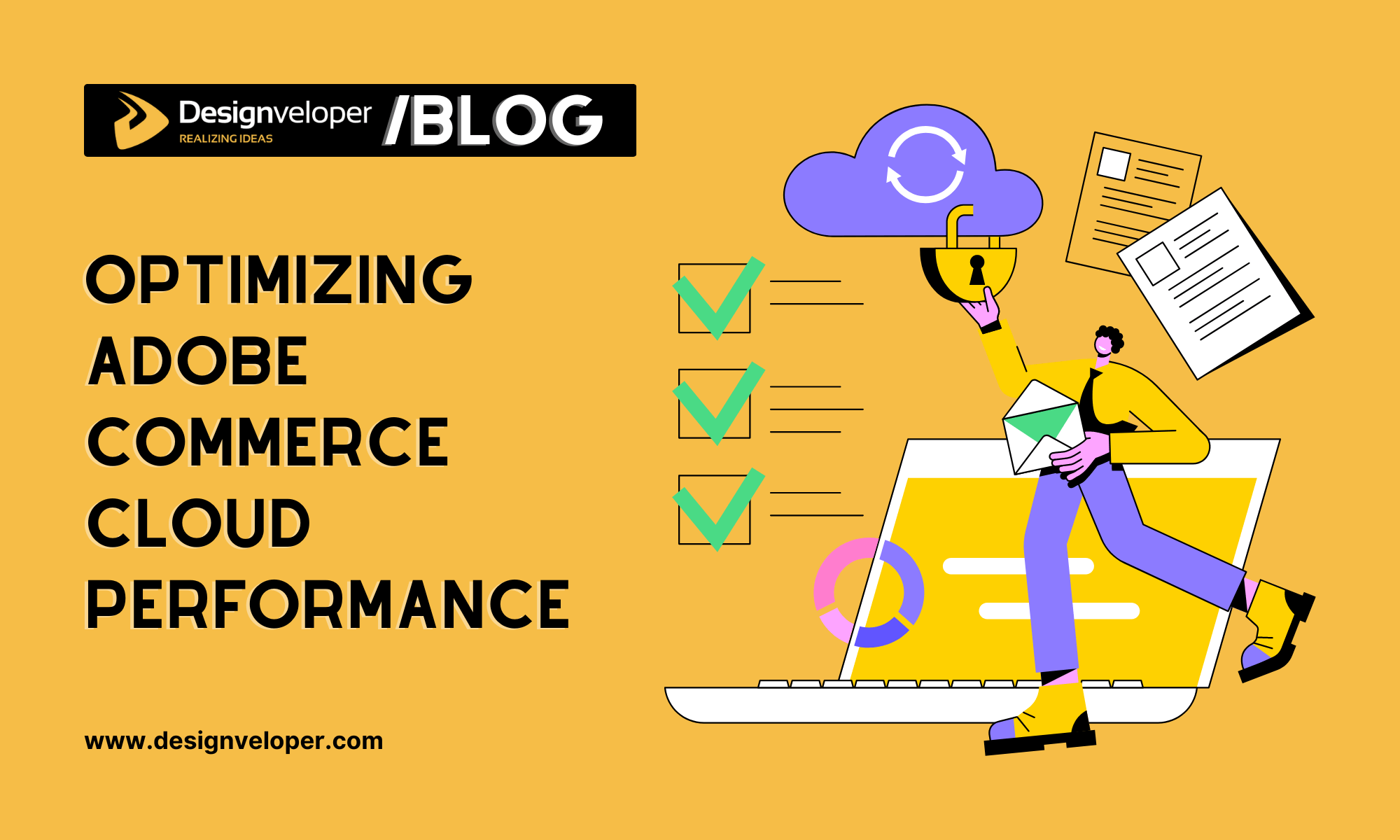In the fast-paced world of eCommerce, performance optimization is not just a luxury, it’s a necessity. Adobe Commerce Cloud, a robust platform known for its flexibility and scalability, stands at the forefront of digital commerce solutions. However, its true potential can only be unleashed through meticulous performance tuning. This article delves into the art and science of optimizing Adobe Commerce Cloud, providing actionable insights for enhancing speed and efficiency. Understanding that every millisecond counts in retaining customer interest and boosting conversion rates, we’ll explore a variety of strategies from server configuration to frontend optimization.
Understanding Performance Metrics in Adobe Commerce
To effectively optimize Adobe Commerce Cloud, it’s imperative to grasp the key performance indicators (KPIs) that define a smooth-running eCommerce platform. Performance metrics are the compass guiding this journey, providing critical insights into areas needing improvement.

Among these, page load time stands out as a pivotal factor—directly impacting user experience and SEO rankings. Additionally, server response time, which reflects the efficiency of the backend infrastructure, is equally crucial. To accurately measure and analyze these metrics, leveraging tools such as Google Analytics and Adobe Commerce’s built-in performance monitoring systems is essential. These tools offer a granular view of performance bottlenecks, enabling targeted optimizations. Furthermore, understanding customer interaction patterns through metrics like session duration and bounce rate can reveal indirect indicators of performance issues. Armed with this knowledge, one can embark on a nuanced approach to enhancing Adobe Commerce Cloud, ensuring a platform that is not only fast but also aligned with user expectations and business objectives.
Recommended reading: A Comprehensive Guide to Cloud Security and Data Privacy
Server and Hosting Environment Optimization

Optimizing the server and hosting environment is a cornerstone in enhancing Adobe Commerce Cloud’s performance. This section outlines pivotal steps to achieve this:
- Selecting the Right Hosting Provider: Choose a provider specializing in Adobe Commerce Cloud, offering robust infrastructure and scalability options. This decision impacts site speed, uptime, and overall performance.
- Optimized Server Configuration: Tailoring server settings to match your specific workload can significantly boost performance. This includes adjusting memory allocation, managing network settings, and ensuring the server’s software is up-to-date.
- Utilizing a Content Delivery Network (CDN): A CDN can drastically reduce load times by serving content from the nearest geographical location to the user, thereby enhancing user experience, especially for a global audience.
- Implementing Advanced Caching Strategies: Effective caching reduces server load and speeds up content delivery. This involves setting up appropriate caching rules for different types of content and regularly updating the cache.
- Regular Server Maintenance: Scheduled maintenance, including updates and security checks, ensures the hosting environment remains optimized and secure.
These steps create a solid foundation for Adobe Commerce Cloud, ensuring it operates at peak efficiency, which is critical in the competitive eCommerce landscape.
Database Optimization Strategies
A well-optimized database is a linchpin in the performance of Adobe Commerce Cloud. The key to enhancing database efficiency lies in meticulous management and strategic data handling. Effective database optimization starts with regular cleaning and pruning of unnecessary data, which helps in maintaining a lean and efficient database structure. This approach not only speeds up database queries but also reduces the load on server resources.

Another vital aspect is the implementation of efficient data indexing. Proper indexing strategies ensure quick and accurate retrieval of information, crucial for fast response times during customer searches and transactions. Moreover, regular monitoring and optimization of query performance can unearth potential inefficiencies, allowing for timely adjustments.
Optimizing database performance also entails choosing the right storage engine and fine-tuning its settings to align with the specific needs of Adobe Commerce Cloud. This tailored approach ensures the database is not just functioning, but excelling in its role as the backbone of the platform, supporting a seamless and speedy eCommerce experience.
Caching Mechanisms and Their Impact
Caching is a critical strategy in optimizing Adobe Commerce Cloud, significantly impacting site performance and user experience. Here are the key aspects of caching and their roles:
- Types of Caching: Adobe Commerce Cloud utilizes various caching mechanisms, including page caching, block caching, and full-page caching. Each type serves a unique purpose, from storing parts of pages to caching entire user sessions, thereby reducing load times and server demand.
- Effective Implementation: Proper implementation of caching is crucial. This involves configuring cache lifetimes appropriately, ensuring dynamic content remains fresh while static content is efficiently reused. It’s about striking the right balance between speed and content relevancy.
- Cache Management: Regular cache maintenance, including clearing and refreshing, is essential. This process keeps the cache system functioning optimally, especially important after updates or changes to the site.
- Monitoring Cache Performance: Continuously monitoring cache effectiveness helps in identifying areas for improvement, ensuring that caching contributes positively to overall site performance.
Frontend Optimization: Speeding Up User Experience
Frontend optimization is a critical element in enhancing the performance of Adobe Commerce Cloud. This process revolves around creating a swift and responsive user interface, crucial for engaging and retaining customers. A key strategy is image optimization, which involves compressing images without sacrificing quality, thus reducing load times significantly. Coupled with this is the implementation of lazy loading techniques, where images and content are loaded only when needed, further speeding up the user experience.
Responsive design also plays a pivotal role in frontend optimization. It ensures that the eCommerce site is visually appealing and functional across various devices and screen sizes, a necessity in today’s multi-device world. This approach not only enhances user experience but also positively impacts SEO rankings.
While these techniques are effective, frontend optimization can be complex, requiring a nuanced understanding of web technologies. For businesses seeking expertise in this area, partnering with a specialized Adobe Commerce Cloud development company can be an invaluable step towards achieving a high-performing, efficient eCommerce platform.
FURTHER READING: |
1. What Are Cloud eCommerce Solutions? |
2. 4 Types of Cloud Computing: Understanding the Difference |
3. What Are the Pros and Cons of Cloud Computing? |
Regular Monitoring and Maintenance
Consistent monitoring and maintenance are essential for sustaining optimal performance in Adobe Commerce Cloud. This ongoing process involves conducting regular check-ups to identify and address any emerging issues promptly. Routine updates, both to the Adobe Commerce software and its underlying infrastructure, play a critical role in maintaining security, functionality, and performance efficiency.

Additionally, implementing a set of reliable tools for performance monitoring is crucial. These tools help track various aspects of the platform’s operations, from server load to user engagement metrics, enabling timely interventions when performance deviations are detected. This proactive approach not only ensures the platform remains at peak performance but also helps in preemptively identifying potential areas of improvement.
Ultimately, regular monitoring and maintenance form the backbone of a robust Adobe Commerce Cloud ecosystem, ensuring that the platform remains agile, secure, and capable of delivering a superior user experience.
Conclusion
In conclusion, optimizing Adobe Commerce Cloud is a multifaceted endeavor, encompassing server and hosting optimization, database management, effective caching, frontend enhancements, and ongoing monitoring and maintenance. Each aspect plays a vital role in ensuring the platform operates at peak efficiency, providing a seamless and speedy experience for users. By implementing these strategies, businesses can significantly improve their Adobe Commerce Cloud’s performance, leading to increased customer satisfaction and higher conversion rates. Remember, performance optimization in eCommerce is a continuous process, demanding regular attention and updates to stay ahead in the dynamic digital marketplace. With the right approach and tools, Adobe Commerce Cloud can be a powerful driver of eCommerce success.























